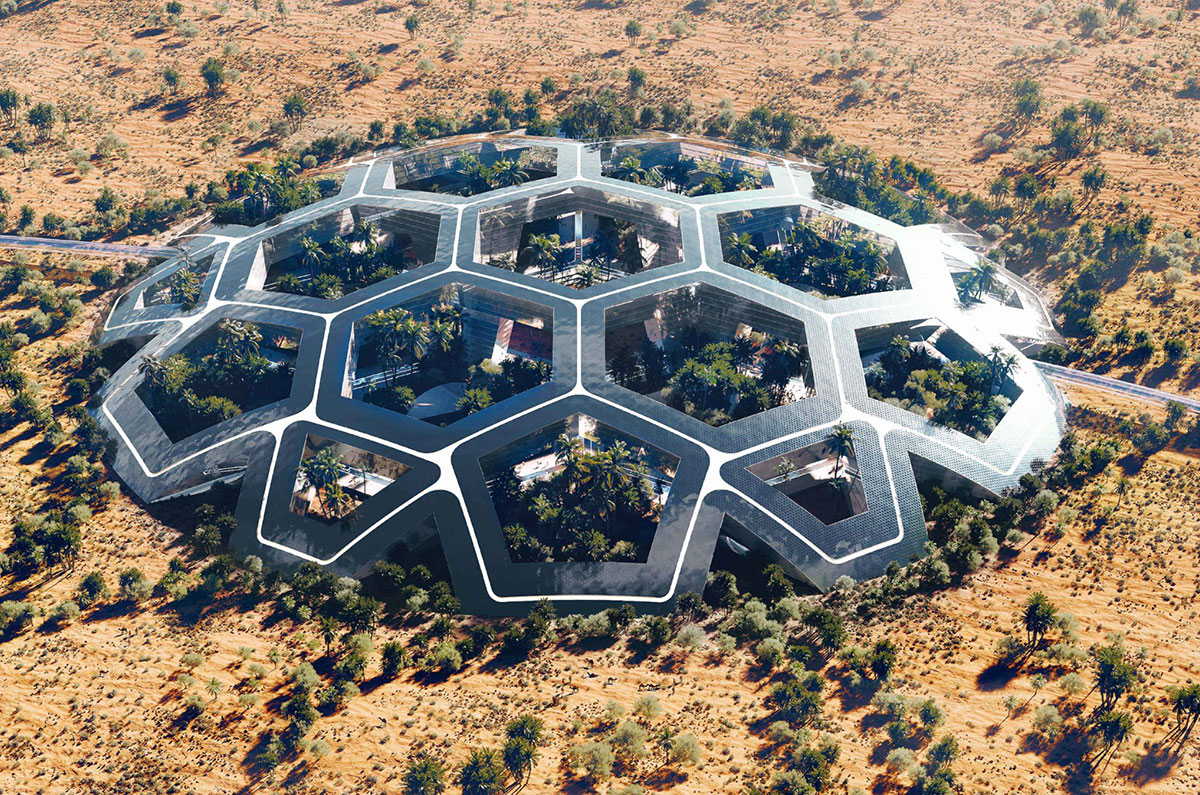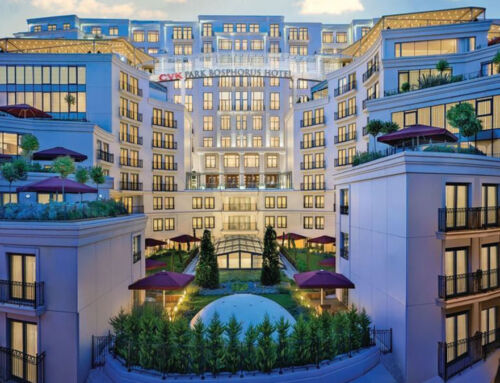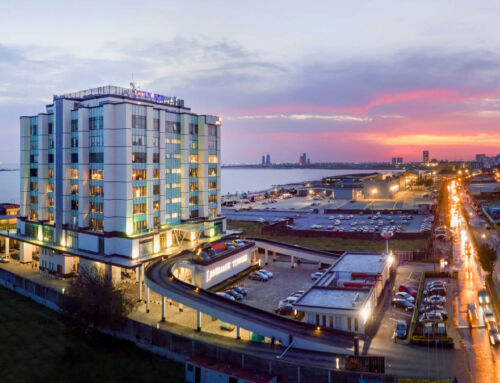“A self-sufficient city designed for extreme habitats“; this is how the project, which they call Biotech City, is presented by the heads of the ON-A architecture studio based in Barcelona, Spain. Or, in other words, ” a self-contained structure that fuses cutting-edge design with sustainable living”. The first thing that strikes us about the urban design of this project is that it is reduced to the space protected by a gigantic dome, as large as the city itself, to such an extent that we are led to affirm that it is a city under a dome. After the meticulous and historical design process carried out by the architectural studio, the dome reached its final shape by means of a concatenation of hexagonal polygons. So, let’s take a look at the design process.
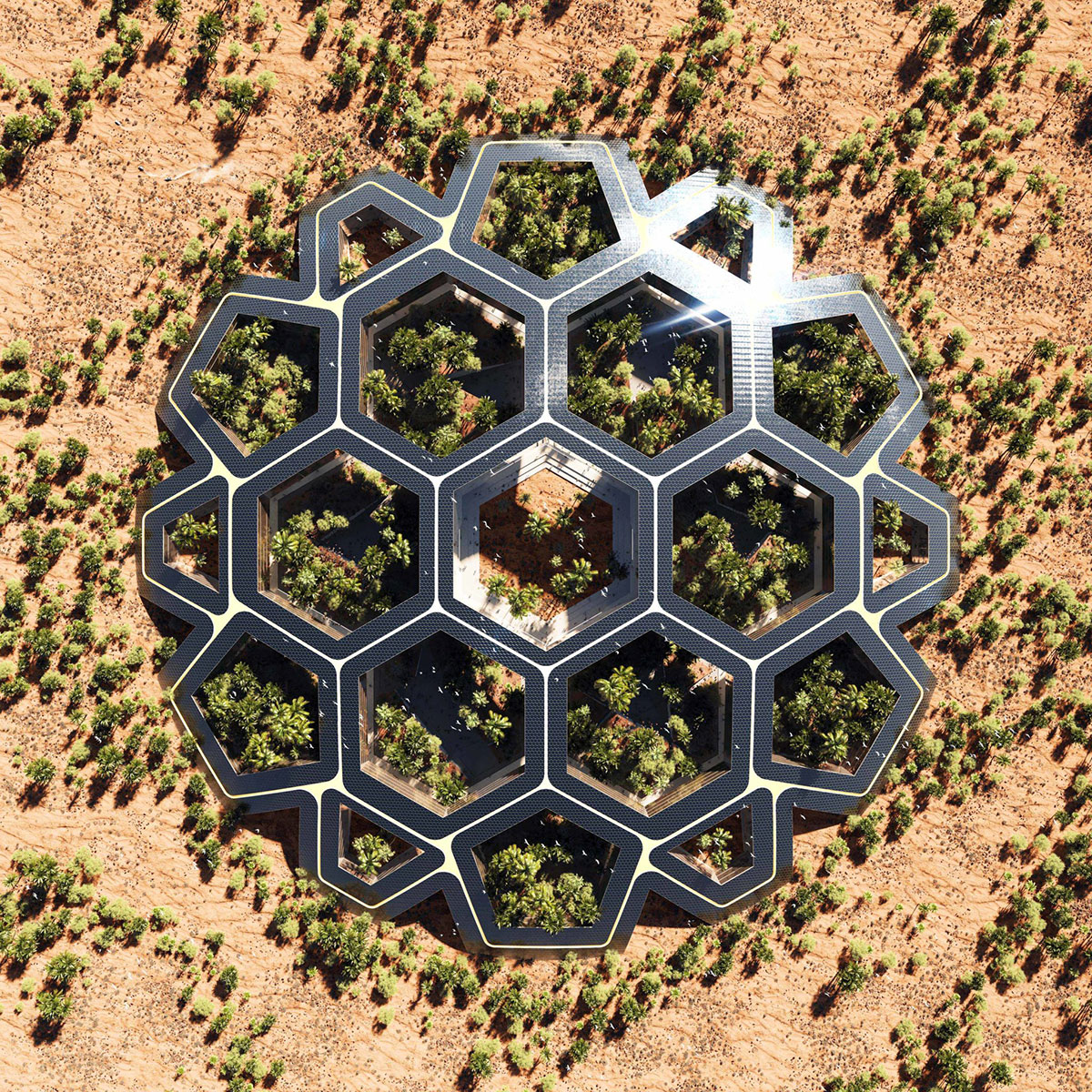
As ON-A architects report, everything started from a circle, a shape that “enables multi-directionality, flexible adaptation, optimized space utilization, and seamless internal circulations”. From that starting point, the architectural design took a step forward with the simple elevation of the central point, so that the simplest imaginable version of a dome was formed. After all, the dome-shaped structure, the architectural firm notes, “serves a conceptual purpose of providing protection, symbolizing harmony with nature, and fostering a sense of unity and community“. So, having justified the dome, we must now move on to its shape, in a new paragraph.
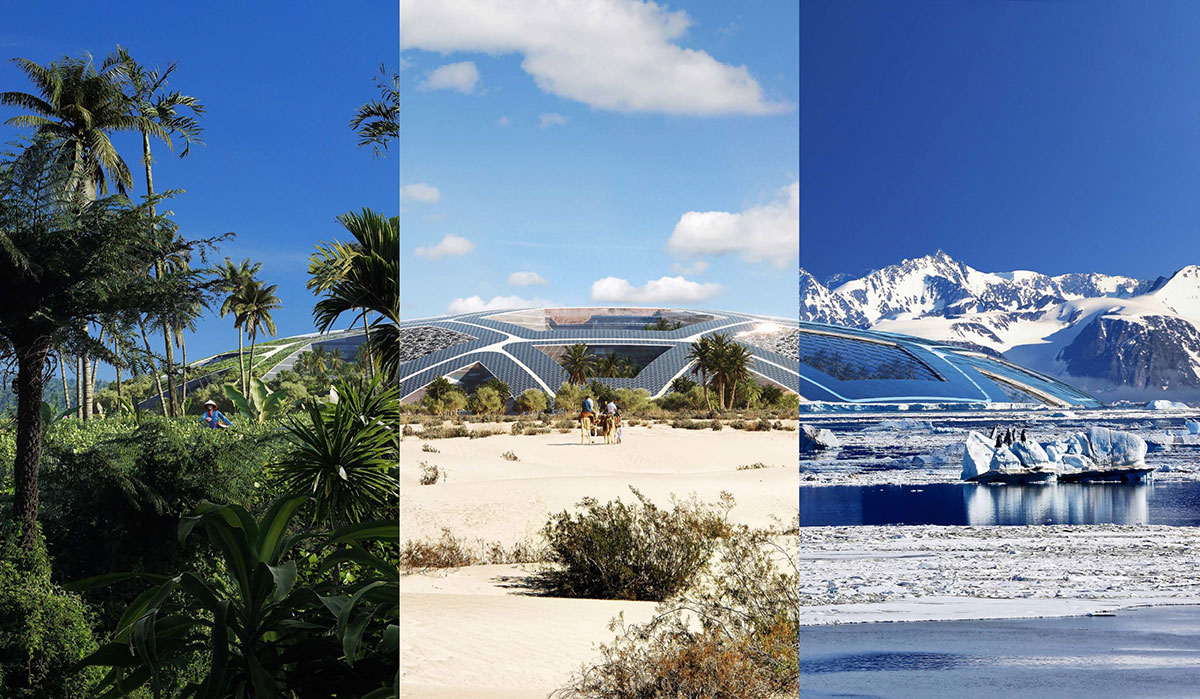
The architectural studio was inspired by the so-called Voronoi diagrams (also known as Thiessen polygons or Dirichlet tessellation) for the next step. Voronoi diagrams, in mathematics, are the result of an interpolation method whereby, starting from a set of points, the bisectors of the connecting segments are drawn, the intersections of which designate a series of polygons, with perimeter equidistant from the neighbouring points (see diagram). In addition to this inspiration, the architectural firm chose the hexagon as the recurring polygon to give the dome its characteristic shape. Therefore, the design provides “a dual-purpose framework, allowing natural light and shaping streets and plazas“.
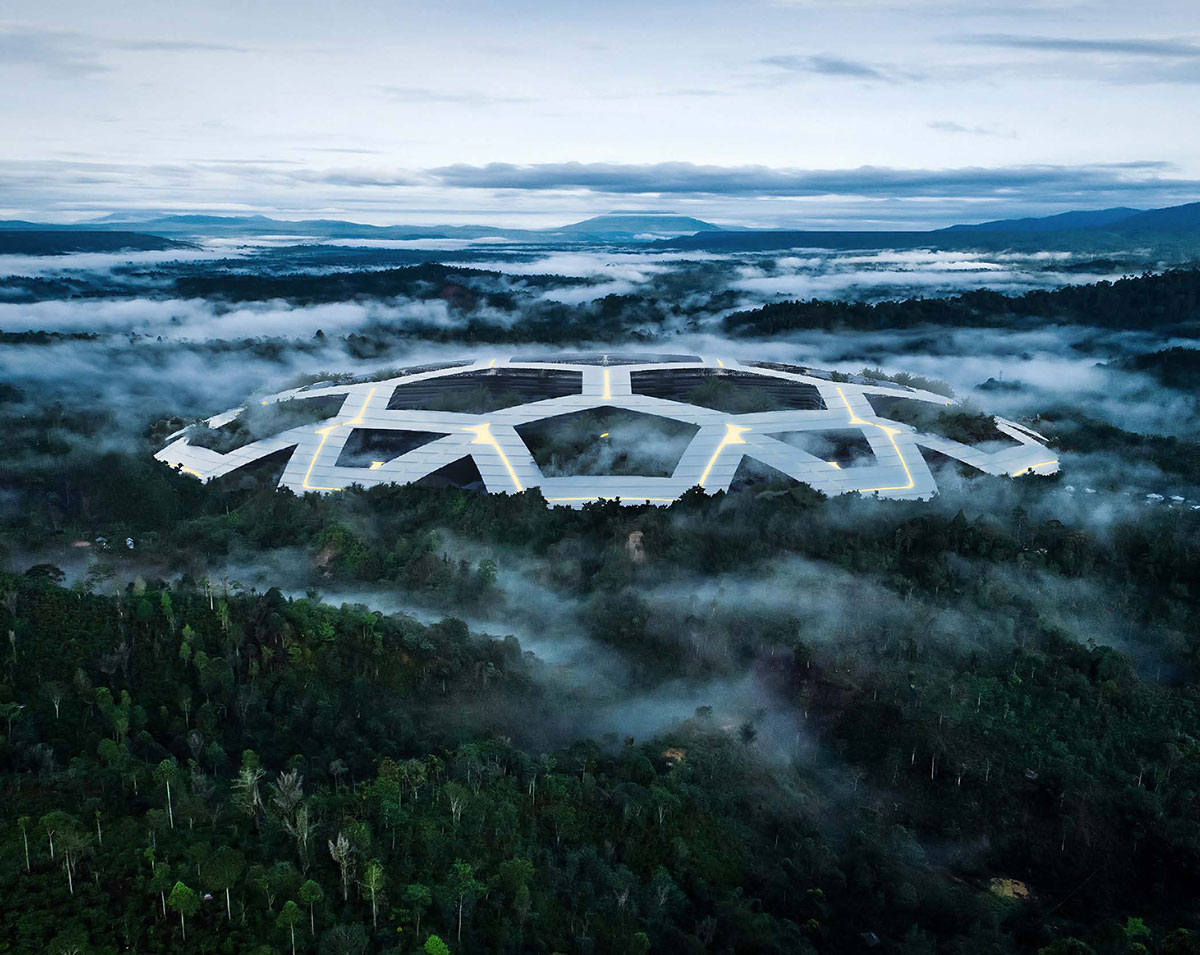
Now, the design of the Biotech City takes a leap, a full stop, and embraces a new attribute: “thickness“. The sides of the hexagons extend vertically, from the top of the dome to the ground. Again, in the words of its architects, “the dome’s substantial thickness transforms it into a multi-functional building, (…) a captivating, interconnected urban hub with vibrant natural spaces below”. Finally, we have a huge, city-sized dome with large hexagonal openings. With this, we have reached the final design of the Biotech City continent. Let us now turn, at least briefly, in a new paragraph, to its contents.
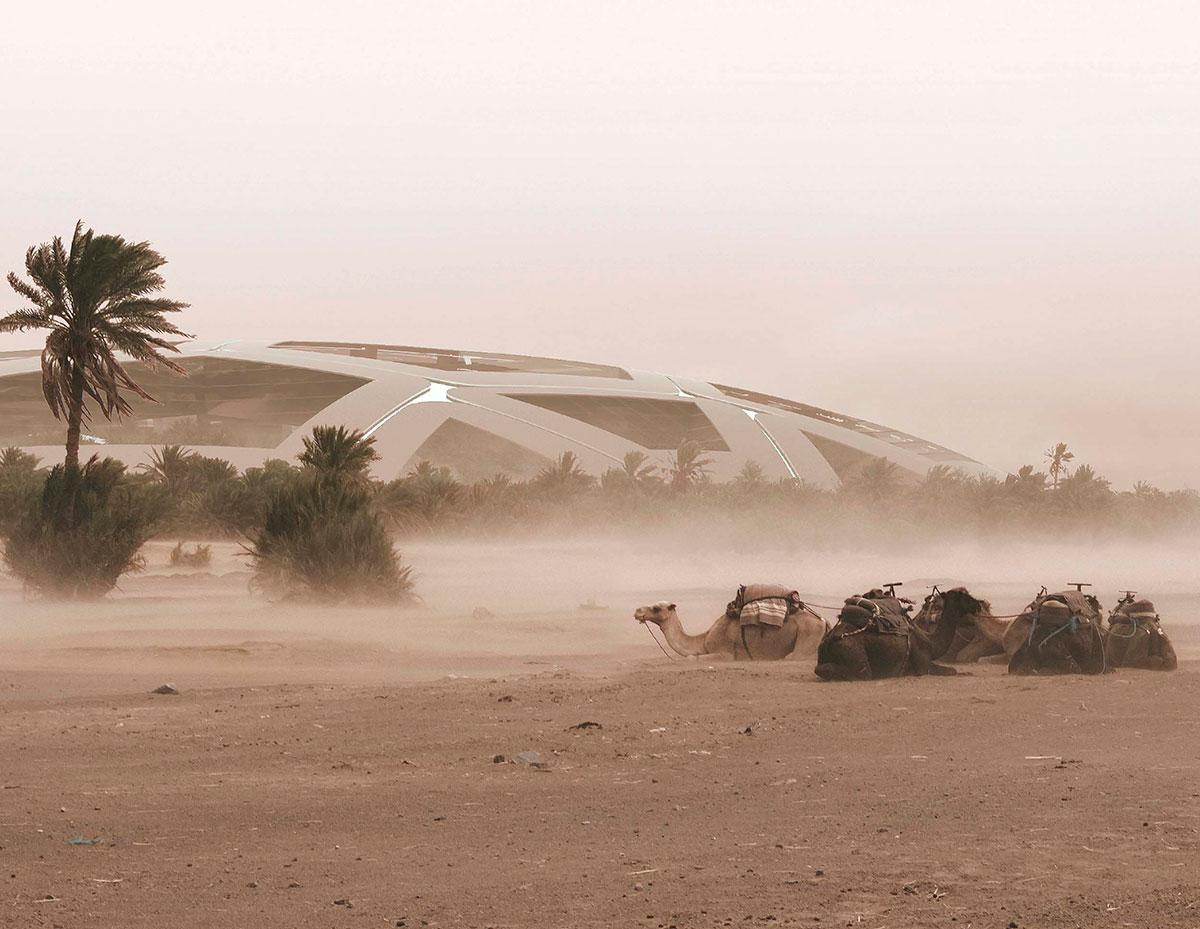
According to the diagram provided by its architects, the Biotech City is divided according to the uses of the buildings and spaces. Therefore, from a central plaza, whose location coincides under the zenith of the dome, different functional spaces radiate out towards the perimeter. The ensemble includes hyperloop train stations, electricity production areas (including extensive solar panels and wind turbines), residential and office areas, green areas, spaces dedicated to education, health, technology and IT, the media… The list includes everything we can imagine a city needs. Let’s take a break here and look at some of the details that justify the name that links biotechnology to this city.
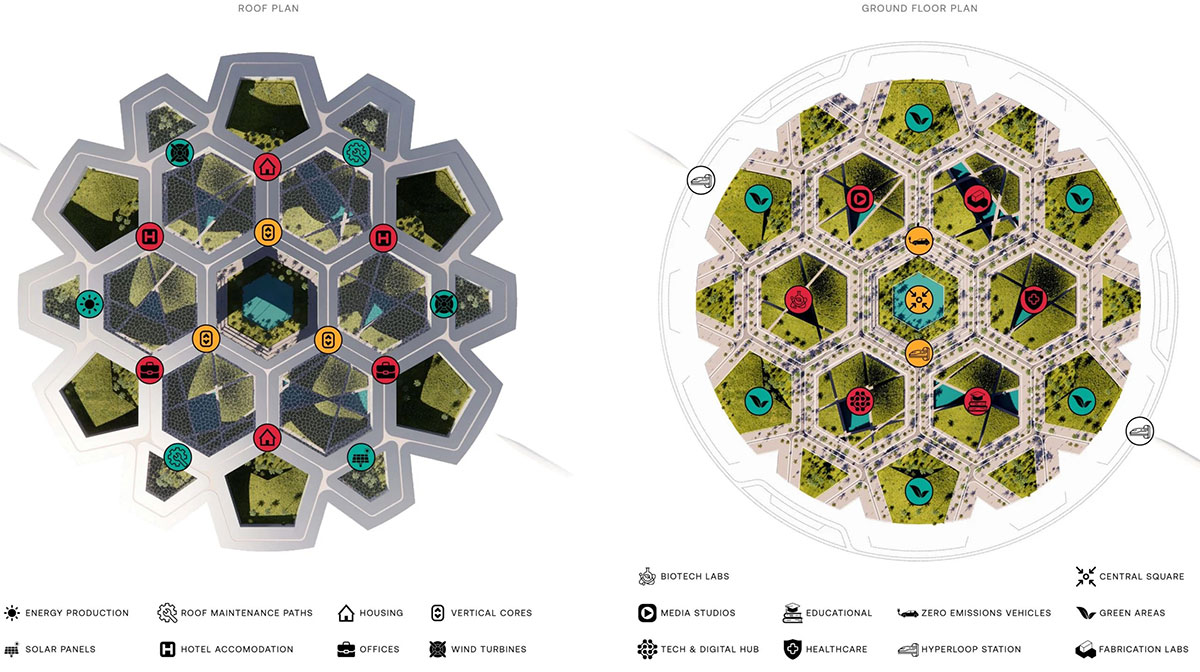

ON-A architects cite their collaboration with BIOO, “a leading biotech company at the convergence of nature and green technology”, to explain the issue. By working together, the two firms are redefining “the boundaries of sustainability and energy efficiency in urban design”. Thus, for example, their idea is to take advantage of plant photosynthesis and “microbial fuel cells” (bio-electrochemical systems that generate electrical energy from the interaction of bacteria), to create an environment that “not only integrates with nature, but also generates energy sustainably”.
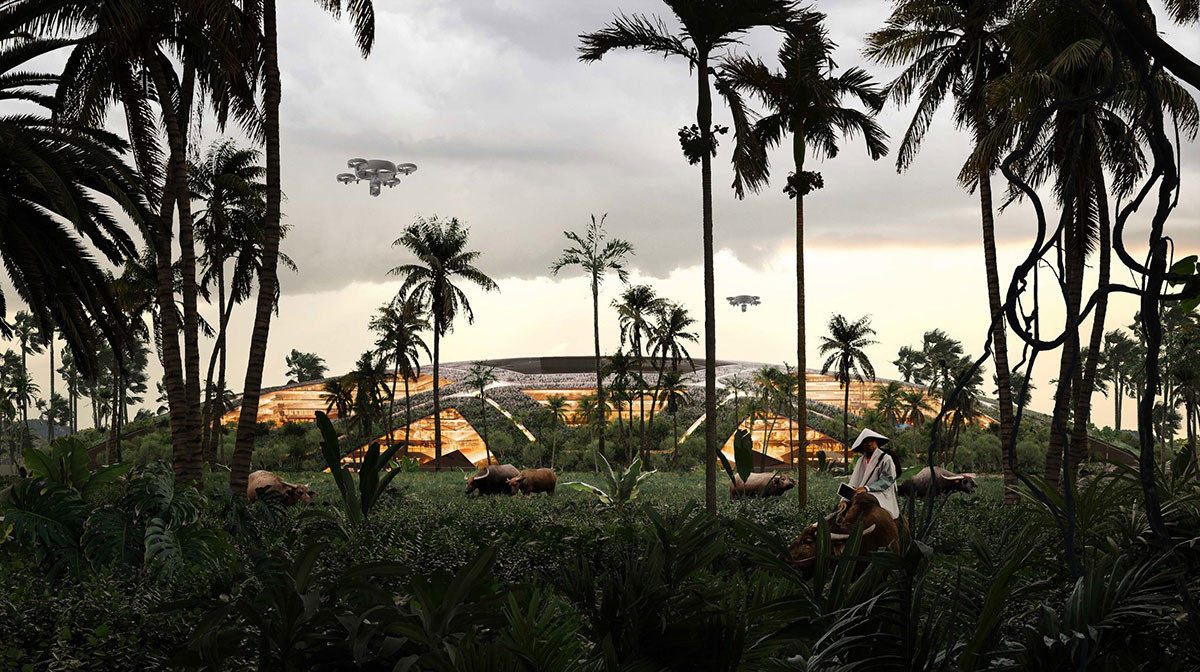
Finally, in this last paragraph, we echo the question of the Biotech City’s adaptability “to the challenges of extreme climates“. As such, thanks to its design based on hexagonal spaces, the city “adopts open configurations“, open to natural ventilation, in temperate climates. In arid regions, on the other hand, the city is protected from solar heat by “opaque structures“. In cold or very cold regions, finally, the city is insulated from the climate by transparent roofs that allow the sun’s rays to pass through.
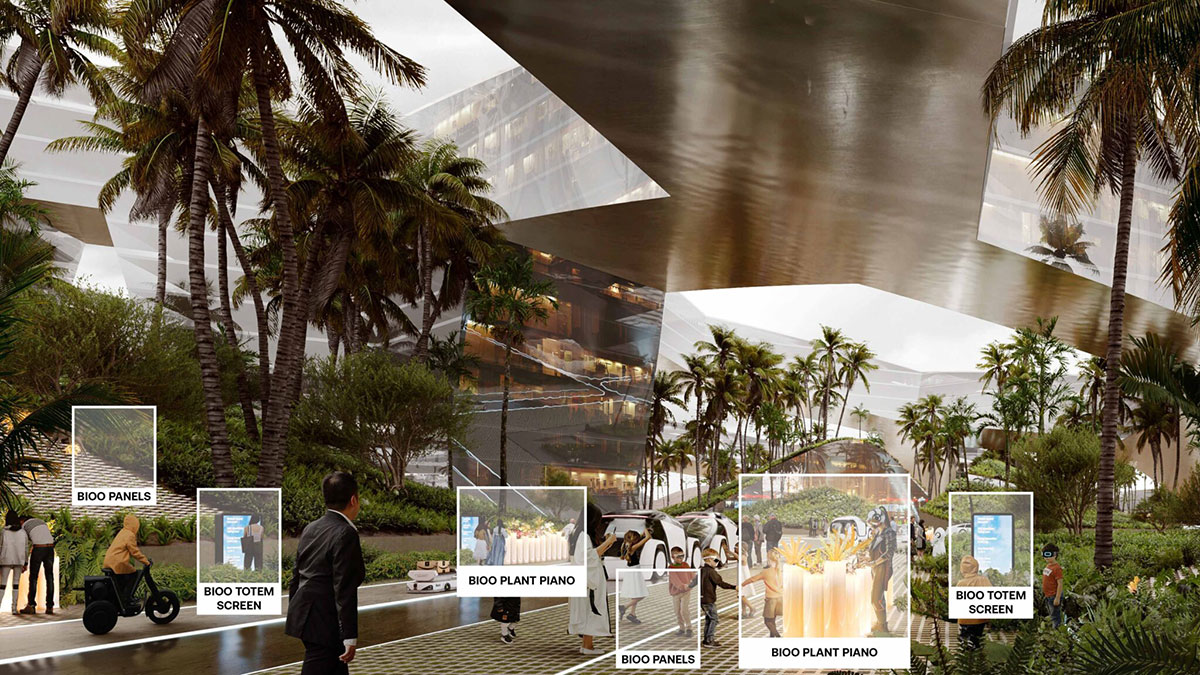
Although the utopian nature of the ON-A Biotech City project is obvious, part of us tells us that it is possible, we even want it to be possible. In any case, given its interest from a design point of view, and also as an urban plan, it is perfectly justified that we dedicate this space to it. Or is it not? We hope you enjoy it.



